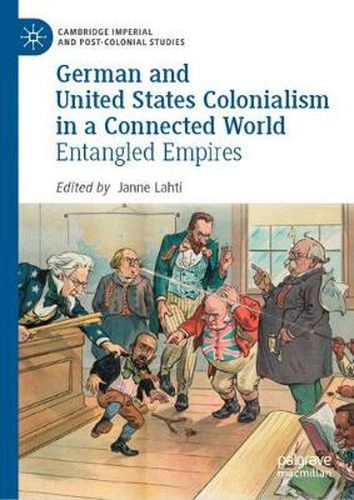Readings Newsletter
Become a Readings Member to make your shopping experience even easier.
Sign in or sign up for free!
You’re not far away from qualifying for FREE standard shipping within Australia
You’ve qualified for FREE standard shipping within Australia
The cart is loading…






This title is printed to order. This book may have been self-published. If so, we cannot guarantee the quality of the content. In the main most books will have gone through the editing process however some may not. We therefore suggest that you be aware of this before ordering this book. If in doubt check either the author or publisher’s details as we are unable to accept any returns unless they are faulty. Please contact us if you have any questions.
This book contributes to global history by examining the connected histories of German and United States colonial empires from the early nineteenth century to the Nazi era. It looks at multiple and multidirectional flows, transfers, and circulations of ideas, people, and practices as Germany and the US were embedded in, and created by, an interconnected world of empires. This relationship was not exceptional, but emblematic of the diverse entanglements that created colonial globality.
Colonial entanglements between Germany and the United States took on many forms, but these shared and intersecting histories have been underanalyzed. Traditionally, Germany and the United States have been understood to have taken, respectively, an authoritarian and liberal path into modernity. But there is no neat dichotomy, as the contributors to this book illustrate. There are many more similarities than have previously been appreciated - and they are the result of multilayered entanglements made visible via conquest, settler societies, racialization, and rule of difference. Building on present historiographies of empires, colonialism, and globalization, this book introduces new analytical possibilities for examining these two relatively understudied empires alongside each other, as well as at their intersections. Chapter 1 is available open access under a Creative Commons Attribution 4.0 International License via link.springer.com.
$9.00 standard shipping within Australia
FREE standard shipping within Australia for orders over $100.00
Express & International shipping calculated at checkout
This title is printed to order. This book may have been self-published. If so, we cannot guarantee the quality of the content. In the main most books will have gone through the editing process however some may not. We therefore suggest that you be aware of this before ordering this book. If in doubt check either the author or publisher’s details as we are unable to accept any returns unless they are faulty. Please contact us if you have any questions.
This book contributes to global history by examining the connected histories of German and United States colonial empires from the early nineteenth century to the Nazi era. It looks at multiple and multidirectional flows, transfers, and circulations of ideas, people, and practices as Germany and the US were embedded in, and created by, an interconnected world of empires. This relationship was not exceptional, but emblematic of the diverse entanglements that created colonial globality.
Colonial entanglements between Germany and the United States took on many forms, but these shared and intersecting histories have been underanalyzed. Traditionally, Germany and the United States have been understood to have taken, respectively, an authoritarian and liberal path into modernity. But there is no neat dichotomy, as the contributors to this book illustrate. There are many more similarities than have previously been appreciated - and they are the result of multilayered entanglements made visible via conquest, settler societies, racialization, and rule of difference. Building on present historiographies of empires, colonialism, and globalization, this book introduces new analytical possibilities for examining these two relatively understudied empires alongside each other, as well as at their intersections. Chapter 1 is available open access under a Creative Commons Attribution 4.0 International License via link.springer.com.